Northwest Italy - Piedmont, Lombardy, Liguria, Aosta Valley
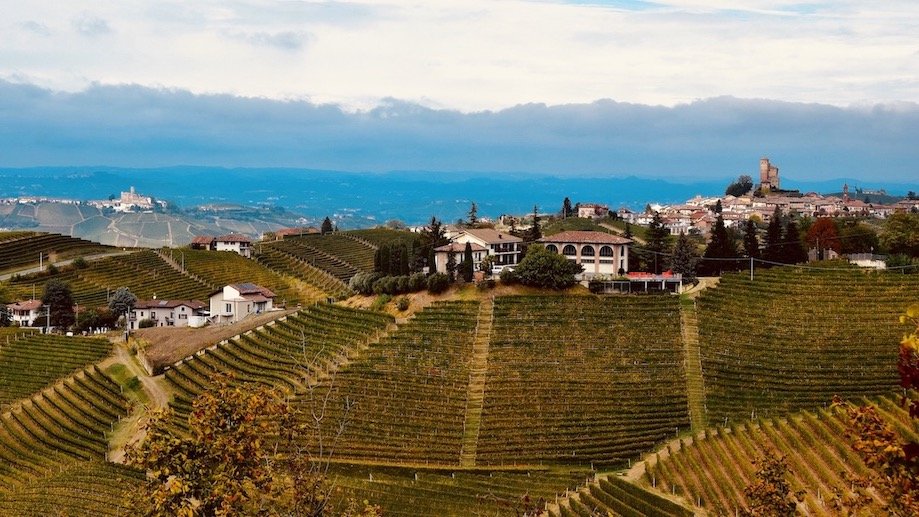
The beautiful Barolo region, Piedmont
Photo source: Winekeller
Our suggestions for exploring Italy’s northwest region:
Northern Italy wine regions - an introduction
To many, northwest Italy comprises just the world-famous hills (and wines) of the Piedmont - or Piemonte - region, however the plains of Lombardy, the tiny mountainous, coastal region of Liguria and the tiny north-west region of Valle d’Aosta, also produce some excellent wines. They are also all wonderful destinations for wine tourists and the epicentre of some of the best Italian wines and food!
The northern Italy wine regions have so much to offer with some of the best places to visit in northern Italy and the northwest is just brimming with breathtaking scenery, amazing culture and incredible wines and gastronomy.
Italian wines - the Northwest
Map of wine regions in Italy - Northwest:
The relatively cooler climates in this part of Italy produce more elegant, aromatic, and earthy red wines and white wines which have lots of wonderful, fresh acidity. Summers can be hot, but inland and in higher locations, fruit ripening can be quite late.
Italian red wines - northwest Italy
The northwest region is the home of Italy’s most noble grape - Nebbiolo - the grape of the world famous Italian Barolo wine and Barbaresco wine. There are many different expressions of it across the region, depending on the terroir and the winemaker.
The other key red grapes are Barbera, Dolcetto and Rossese and in terms of international grape varieties, Pinot noir (see Lombardy).
Italian white wines - northwest Italy
In terms of white grape varieties in this part of Italy, significant ones include Moscato Bianco, Cortese, Arneis and Vermentino.
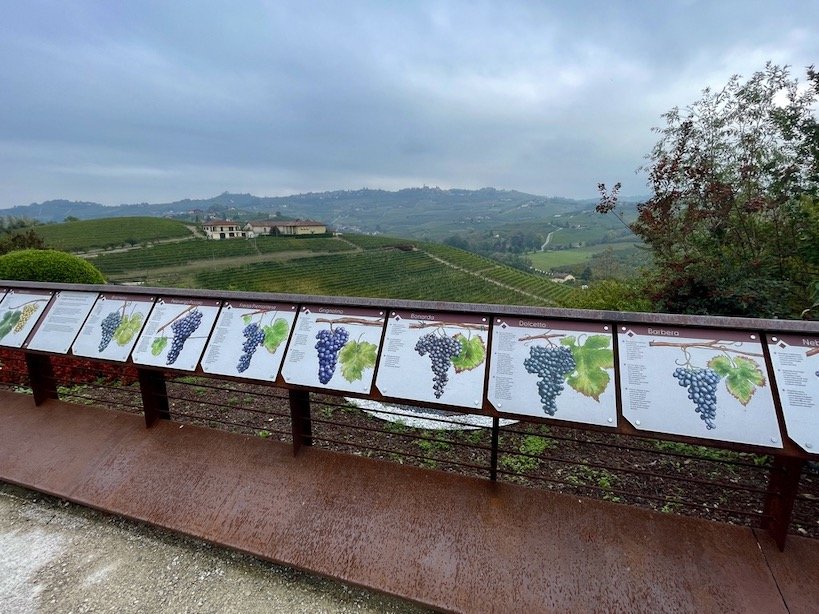
A land of the vine
The Aosta Valley
Valle d’Aosta in the far northwest, is Italy’s smallest wine region. Alpine conditions mean the wines have a greater finesse and elegance.
Liguria
Liguria is also a tiny wine region, with barely enough space for the vines between the mountains and the Mediterranean sea. A popular Ligurian wine is ‘Cinque Terre’, served with fish on the coast.
Lombardy
Lombardy is one of Italy's largest, most populated regions and has Italy’s second-largest city (Milan) as its regional capital. However, it is in the top 5 largest DOC wine producing regions in Italy and there is a lot of unspoiled countryside, home to many small-scale wineries. It’s also a beautiful region to explore, with breathtaking mountainous scenery, beautiful lakes and mediaeval towns and villages.
Lombardy is landlocked and its location between the Alps and the Po Basin contributes to a diversity of climates and terroirs, producing a wide variety of different wines and wine styles.
Lombardy has 5 DOCG areas, 2 of these being for sparkling wines - Franciacorta and Oltrepò Pavese - Franciacorta wines are one of the best Italian sparkling wines and are made according to the traditional champagne method, but Pinot blanc grapes are used instead of Chardonnay, along with Pinot noir grapes. There are also 22 DOC wines and 15 IGT wines and the key grape varieties in Lombardy are Nebbiolo, Pinot noir and Chardonnay. Another famous and historic Lombardy DOC is Valtellina, situated in the high-altitude Alpine region, where the Nebbiolo grape variety flourishes, producing superb, complex red wines.

Liguria - on the ‘Italian riviera’
Piedmont (Piemonte)
From the snow-covered alpine peaks to the heavily forested foothills, the Piedmont region of Italy (or Piemonte in Italian), has so much to offer, including breathtaking natural scenery, a wealth of cultural experiences and of course incredible gastronomy!
The word ‘Piemonte’ comes from ‘the foot (‘pie’) of the mountains (‘monte’)’ - describing its position at the foot of the Alps, which almost encircle the whole region. Piemonte borders France in the west, Switzerland in the north, Lombardy in the east and the Apennines mountains in the south.
Piedmont is famous for its wines but also for its pungent truffles! This is mostly due to the unique soils in Piedmont - a result of the region once being underwater and then subject to constant flooding and earthquakes.
Piemonte wines
Wine is produced around most of Piedmont region and it’s best known for its famous Barolo and Barbaresco red wines - which take their names from villages of the same name. Most of the other Piedmont wines are named after the grapes from which they are made, ie Nebbiolo, Dolcetto, Barbera, Moscato.
In terms of the top DOCG wines, in addition to the Barolo and Barbaresco DOCGs, others include Asti and Moscato d’Asti DOCG (the famous sparking wines), Barbera d’Asti DOCG, Dolcetto di Diano d’Alba DOCG, Brachetto d’Acqui DOCG, Dogliani DOCG, Nizza DOCG, Roero DOCG and Ruchè di Castagnole Monferrato DOCG.
Piemonte is also home to a variety of local white grape specialities, including Cortese - the grape of the most respected white, Gavi; Muscat; Arneis and Favorita.
There are 3 famous hill districts in Piedmont that were all listed as UNESCO World Heritage Sites in 2014 - Langhe, Roero and Monferrato.
Beautiful Lombardy
The famous village of Barolo in the Langhe hills
The 3 famous hill districts of Piedmont
Places to visit and things to do and see in Northwest Italy:
The beauty of visiting Northwest Italy is its diversity…
The famous Northern Italian cities
Northwest Italy is home to three great cities – Milan, Turin and Genoa.
Milan - one of the world’s fashion capitals, and home to both Leonardo’s Last Supper and the world’s premier opera house, La Scala. It is also home to prestigious museums and art galleries, excellent restaurants, hotels and designer shops and above all, Milan is the centre of business in Italy.
Turin (Torino) - the capital of Piedmont today and the first capital of a unified Italy and historic home to the Savoy kings. It is a vibrant city, with beautiful Baroque squares and is also the capital of Slow Food and the cradle of Italian café culture, so expect superb cuisine, amazing wines, opulent coffee houses and lots of chocolate shops.
Genoa - sandwiched between the mountains and the sea on the Ligurian coast and its ancient port - the most important port in Italy today - forms the glittering centre of its regeneration. Today, the historical city centre is one of the most densely packed in all of Europe.
Resorts on the Italian Riviera
The Ligurian coast - known as the ‘Italian Riviera’ - offers both a rugged coastline along with occasional fine sandy beaches. On the coast east of Genoa, known as the Riviera di Levante (Riviera of the Rising Sun), is Portofino, a very pretty spot with a delightful harbour and colourfully painted houses, and a cluster of 5 former fishing villages hugging the cliffs known as the Cinque Terre - a Unesco World Heritage Site.
The Italian north lakes
The Italian Lakes offer a bit of everything; pretty towns and villages perched on the water's edge, a backdrop of mountains, fine buildings and, of course, stunning scenery. There are 5 famous Italian lakes in the northern Italian lake district – from west to east: Lakes Maggiore, Lugano, Como, Iseo and Garda – and each has its own distinct character.
Lake Como - the most dramatic of the lakes, backed by the snow-capped Alps, popular with the Milanese. Como is a thriving town and you can take a ferry from its pier to reach Bellagio, a jewel of a town sitting at the spot where Lake Como divides into 3 parts.
Lake Maggiore - the westernmost lake, it has a special attraction, Isola Bella, the most romantic of the 3 Borromean Islands, famous for their palazzi and gardens. The resort of Stresa has a delightful lakeside promenade known for its flowers and views of the lake's islands.
Lake Garda - Italy's largest and easternmost lake, surrounded by rolling green hills and gardens, vineyards, lemon trees and olive groves. The spa town of Sirmione is Garda's most popular resort.
Mountains and skiing
Hugging the slopes of Mont Blanc (Monte Bianco), Courmayeur is one of Italy’s oldest and most picturesque ski resorts.
Northwest Italy gastronomy and food culture
Each region of Italy has its own gastronomic specialities, based on local ingredients and traditions. In Northwest Italy you can enjoy wonderful, diverse culinary delights, be it fresh fish on the coast, black and white truffles in Piedmont around Alba and the wine regions of Barolo and Barbaresco, or the different versions of Milanese risotto from Milan.
Most of the cooking is with butter and cheeses are a speciality - for example the Lombardy cheeses of Gorgonzola, Grana Padana and Taleggio, the Piedmont cheeses, Robiola, Castelmagno and Bra and Fontina from the Aosta Valley.
Gressini breadsticks originated in Turin and Pesto from Genoa; nuts are popular here, especially hazelnuts and a typical meat dish is Ossobuco - veal shin with marrow bone in tomato sauce. Beef is also popular and porcini mushrooms of course.
Bagna Cauda is a delicious dipping sauce for vegetables and bread that is served warm and a classic from the Piedmont region, as is the wonderful starter dish, vitello tonnato, which is very thinly sliced veal served with a tuna mayonnaise sauce - one of our favourites!
Also in eastern Piedmont, filled fresh-egg pasta known as plin is popular as is Tajarin, another egg-based fresh pasta, often made with a huge amount of egg yolk and finished with butter, sage, and parmigiano and both pair wonderfully with the local Barbaresco or Nebbiolo wine.
Visit here for more information and inspiration about visiting Northwest Italy.
Vitello Tonnato
Carpaccio of beef with porcini mushrooms
Italian cheese stall at the market




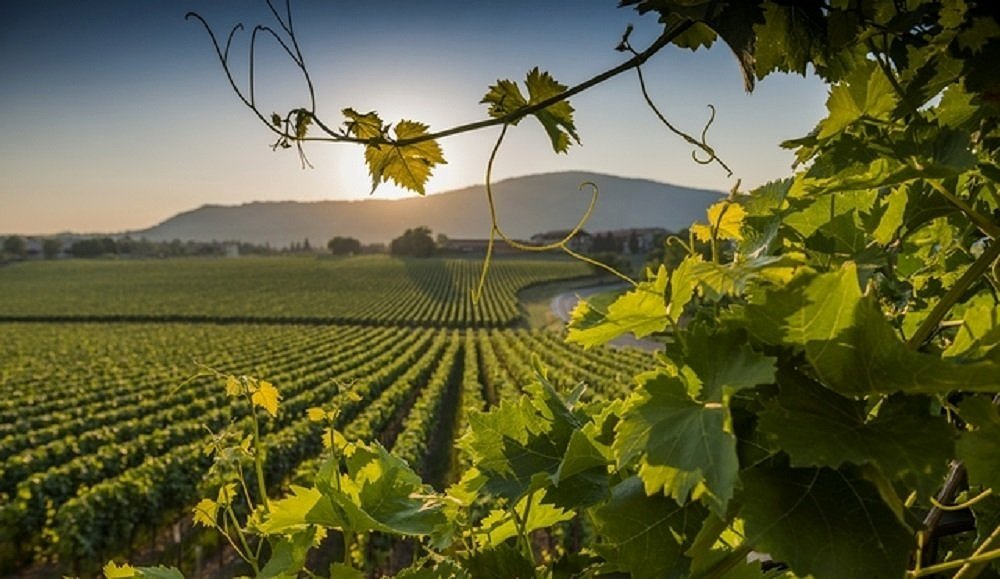
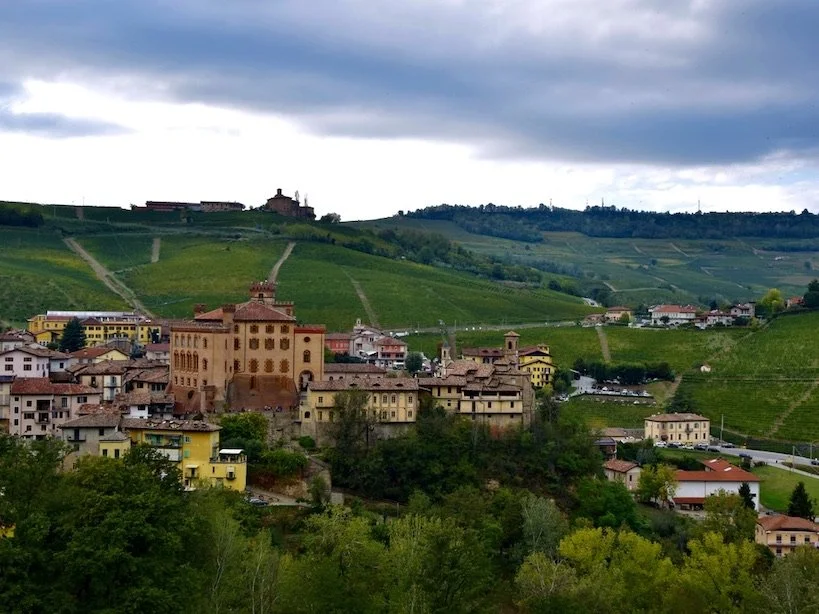
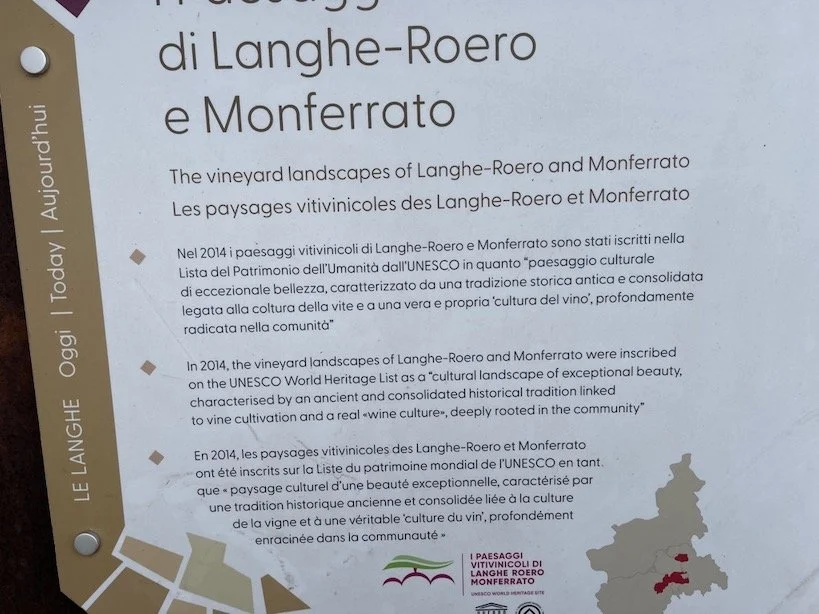
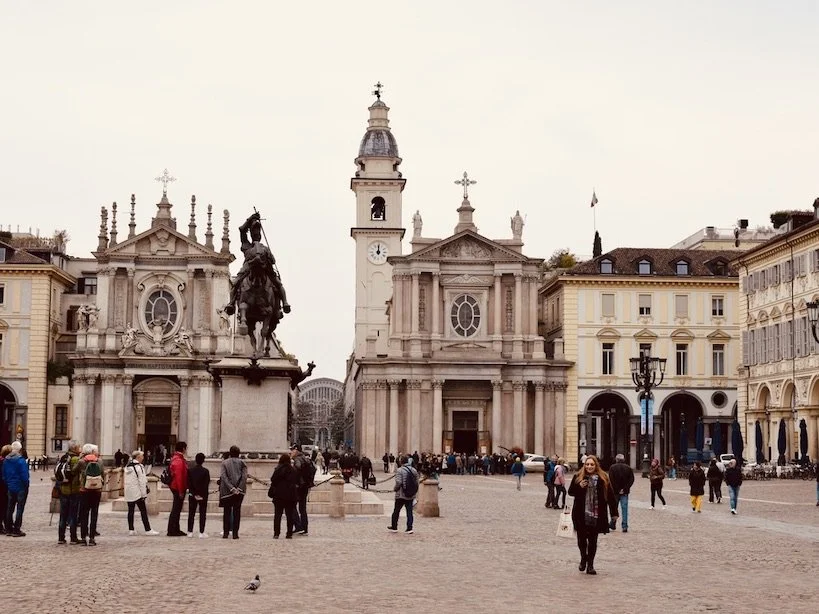


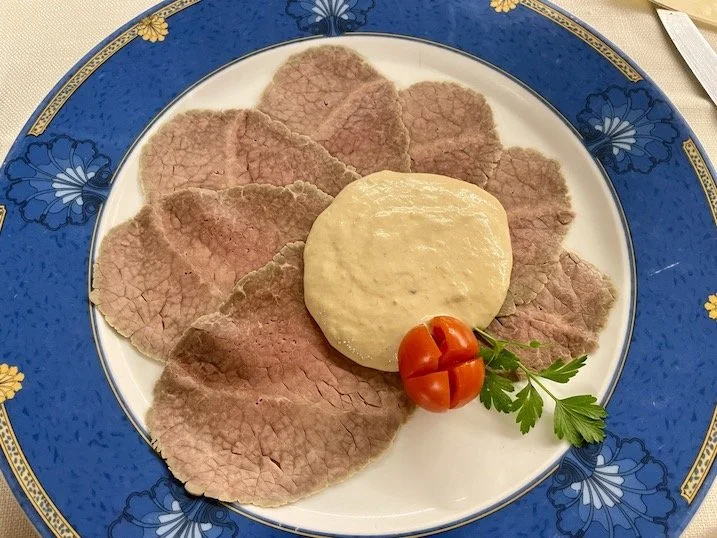

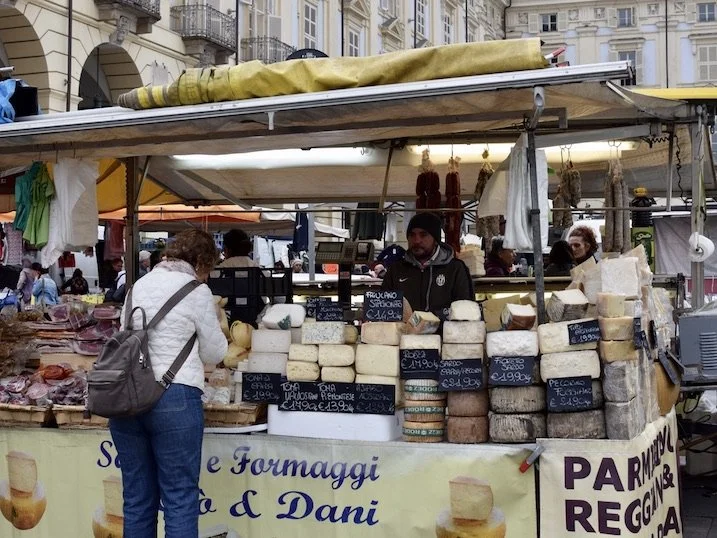
Barbaresco is one of the top 2 wine regions of Piedmont in Italy, the other being Barolo. Wine produced in Barbaresco is probably slightly less famous than its neighbour, Barolo, but they are both made from the Nebbiolo grape which grows so well in the Langhe hills and they are both world-famous red wines from Piedmont.
Read on to learn more about Barbaresco and its wines..